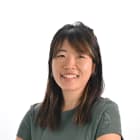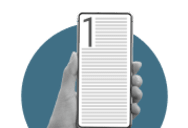After easing her mum’s pain with one prick to draw blood, she vowed to give all patients the same care
For patients undergoing a blood draw, various factors including illness, dehydration and anxiety may hinder phlebotomists from finding a healthy vein easily. But Siti Hamimah’s goal remains: To draw their blood on the first attempt.
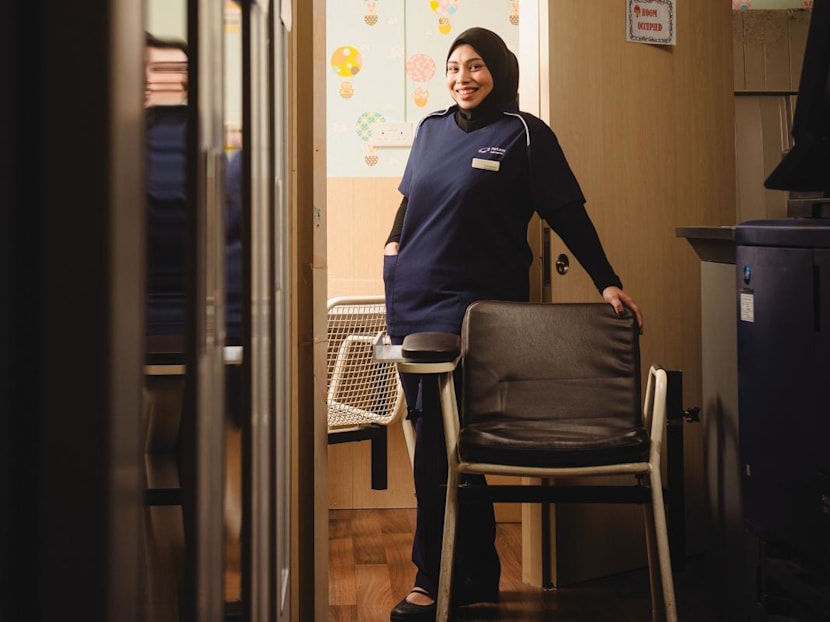
Phlebotomist Siti Hamimah believes in successfully drawing a patient's blood on the first prick. (Photo: Mount Elizabeth Hospital)

This audio is generated by an AI tool.
A chair can be Siti Hamimah’s greatest, if most unassuming, ally.
As a healthcare professional trained to draw blood samples from patients, the 36-year-old phlebotomist knows the simple seat can mean the difference between a calm and traumatic experience.
It’s no ordinary chair either. Just as dentists rely on specialised recliners, the phlebotomy chair is “special”, she told CNA Women.
This chair has swivelling, height-adjustable armrests that let Siti straighten a patient’s arm, choose the best vein and decide on the technique – without having to reposition the entire chair.
That precision helps her hit her personal benchmark: One prick.
It’s a goal she set after successfully helping her first cancer “patient” over a decade ago: Her mother.
“ONE PRICK”
In 2014, Siti’s mum was diagnosed with Stage 1 breast cancer at 46 years old and underwent a mastectomy to remove her left breast. Siti then spent two weeks by her side while she was recovering in the hospital.
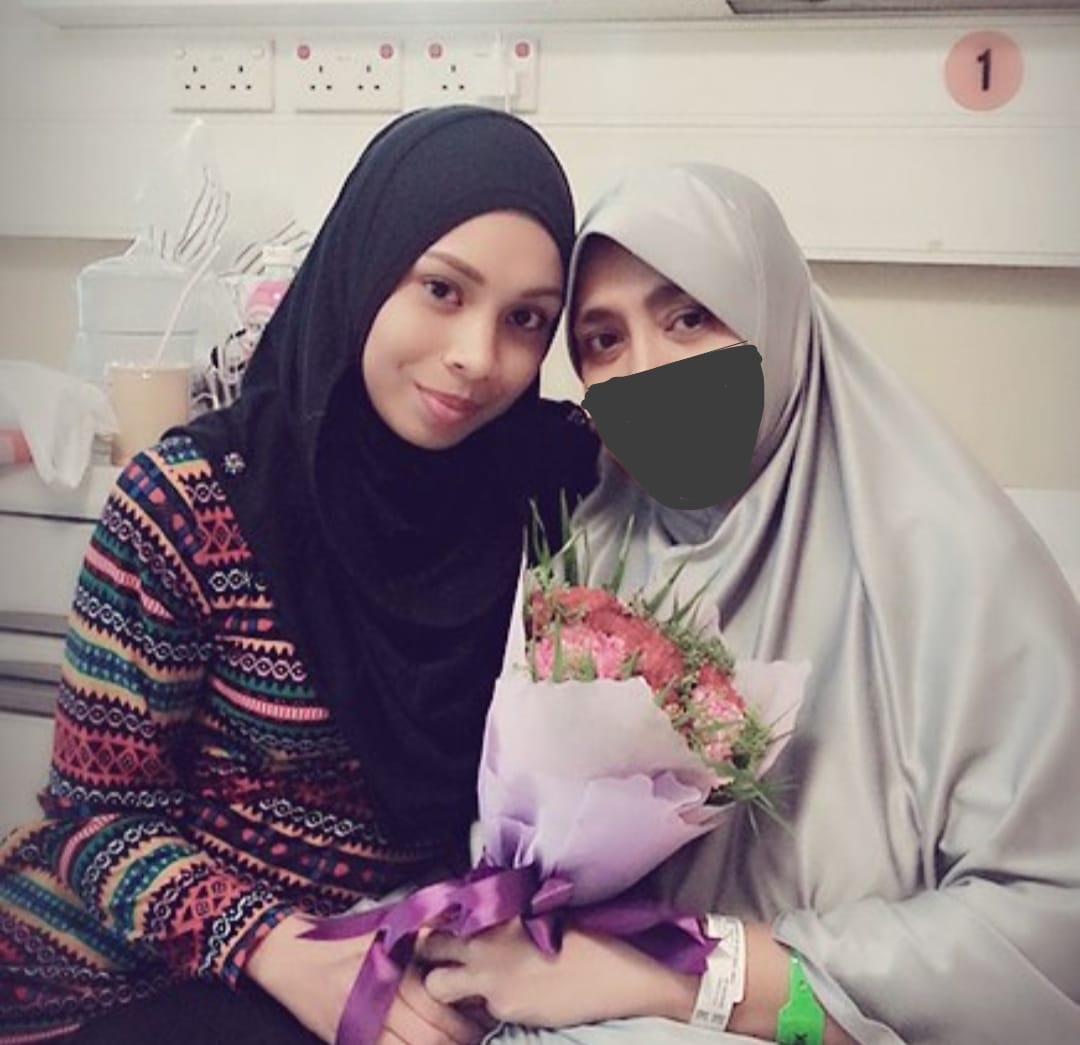
Surgeons usually remove a few axillary lymph nodes from the same side as the affected breast to check for cancer spread.
Afterwards, the opposite arm – the right for Siti’s mum – is used for blood draws or intravenous lines to reduce the risk of lymphedema. This refers to swelling that occurs when lymph fluid accumulates because the nodes that normally drain it have been removed or damaged.
But Siti soon realised the blood draw was less straightforward in practice. Chemotherapy had shrunk and hardened her mum’s veins, making it tricky for the doctor to locate a healthy vein.
“I didn’t know the doctor (had already) pricked her five times. He wanted to proceed to the foot to draw blood, but she called for me. I was just standing behind the (hospital bed) curtain and she said, ‘Tolong mama. Sakit ni,’” she recalled.
The Malay words translate to: Please help Mama. This hurts.
“That’s still vivid in my mind that (let me) know she’s in pain,” she added, choking back tears.
Having been a dialysis nurse for five years at the time, Siti asked the doctor if she could assist with drawing her mum’s blood as she was familiar with the process. He agreed, entrusting mother to daughter.
“It took me a while, actually, to find a very good vein for her,” said Siti.
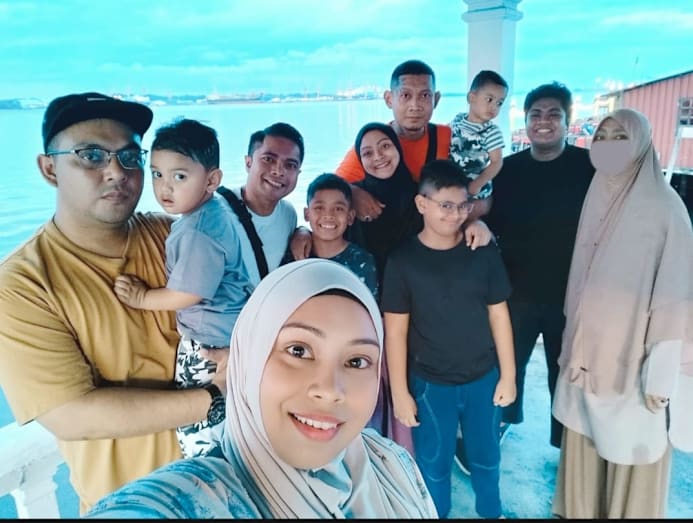
The process includes assessing the patient’s veins visually and by touch, and palpating the vein to ensure it’s suitable. Sometimes, techniques like warming the area or having the patient make a fist to help visualise veins are used, she explained.
Finding a good vein may prove harder among patients who have “small, fragile or hard-to-access” veins, such as the elderly, babies or those with edema – swelling caused by an accumulation of excess fluid in the body’s tissues.
But she reassured her mum by saying, “Alright, I’m going to do this once. Just bear with me,” she recalled. “She did, and that’s when I extracted her blood with only one prick.”
As she was resting in bed after the blood draw, Siti’s mum reached for her daughter’s hand, whispering the words that would steer Siti’s career: “You should help patients like me.”
HELPING THOSE LIKE HER MUM
By sheer serendipity, Parkway Laboratories contacted her a few weeks after she returned to work. There was a phlebotomist position open.
Phlebotomists are skilled healthcare professionals who collect blood samples from patients for medical testing, research, transfusions or donation. Their work supports accurate diagnosis and treatment of various conditions.
The medical specialisation had never crossed Siti’s mind, but she couldn’t forget her mum’s poignant advice weeks prior.
She sought her mum’s blessing to switch her career path and accepted the job offer, upgrading her phlebotomy skills at Parkway College – the training arm of private healthcare network IHH Healthcare Singapore that owns Parkway Laboratories.
Now a principal phlebotomist at Mount Elizabeth Hospital in Orchard – which receives clinical laboratory and diagnostic services from Parkway Laboratories – for a decade, Siti has helped thousands like her mum.
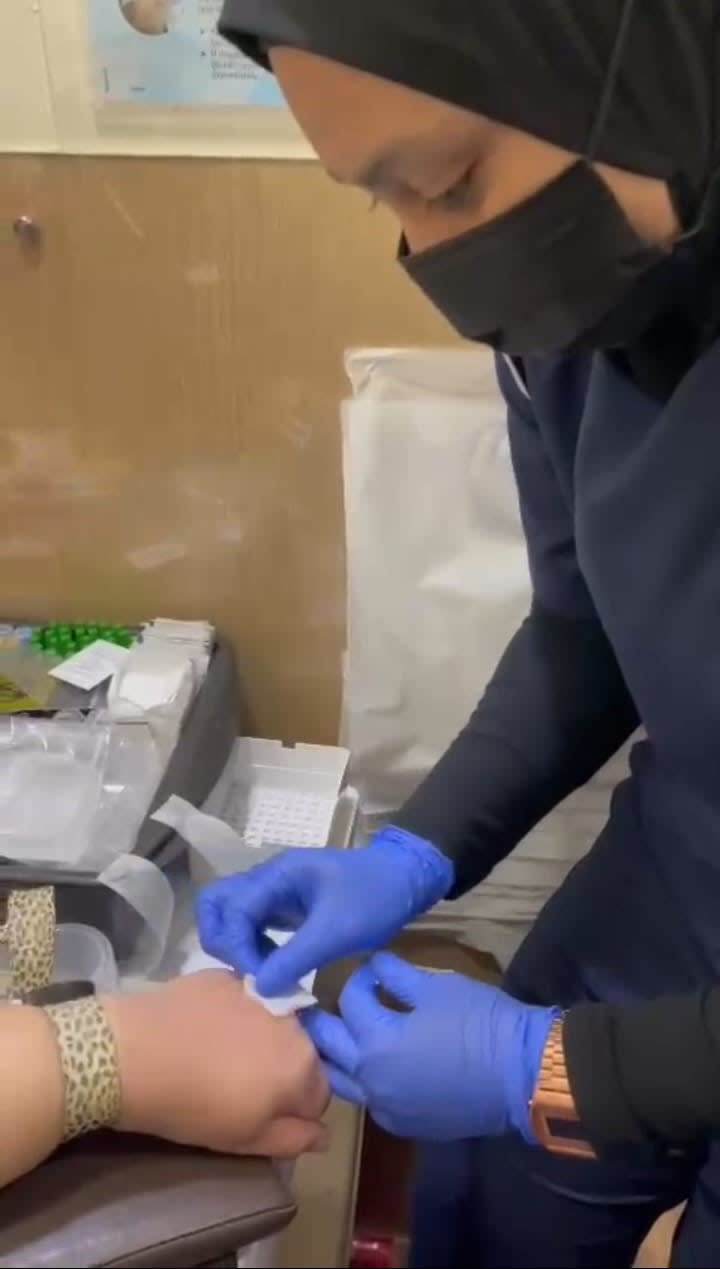
Whenever she gets a new patient, her first task is to find a good vein. She eventually selects one based on size, stability and accessibility.
Size-wise, veins should be “prominent enough” and have a “good volume” of blood, while a stable vein is less likely to roll or move when the needle is inserted. And accessibility refers to how easy it is to get to the vein with the needle.
If no good vein can be found, the phlebotomist may need to try “alternative sites or methods”, or ask for assistance from doctors, she said.
Siti also uses the brief moments before the needle goes in to connect with the patient, as each copes differently just before the jab. One might ask her to cue a deep breath, while another might prefer to pinch their own skin.
A first-timer might act “macho”, she’s also observed, yet faint without warning if no one spots their anxiety about needles.
Yet, one thing is common: “They will always tell us how they control their pain or handle their stress,” she said.
“That’s why you should use the very short period of time to build rapport with your patient. There’s very important information you should get.”
Being fully present with the patient is key, she added, highlighting one of her mum’s lessons from her two-year recovery.
“She’d often share with me, ‘As a patient, when the nurse comes towards me, I can feel it, whether this nurse is doing her job from (the) inside out (or) just doing the work for money,” she said.
“If you’re facing a (personal) problem, put that behind you and be there for the patient. It’s not about you anymore.”
BEYOND THE NEEDLE
In fact, Siti’s quiet, enduring dedication recently inspired a design project celebrating Mount Elizabeth Hospital’s first major refurbishment since 1979.
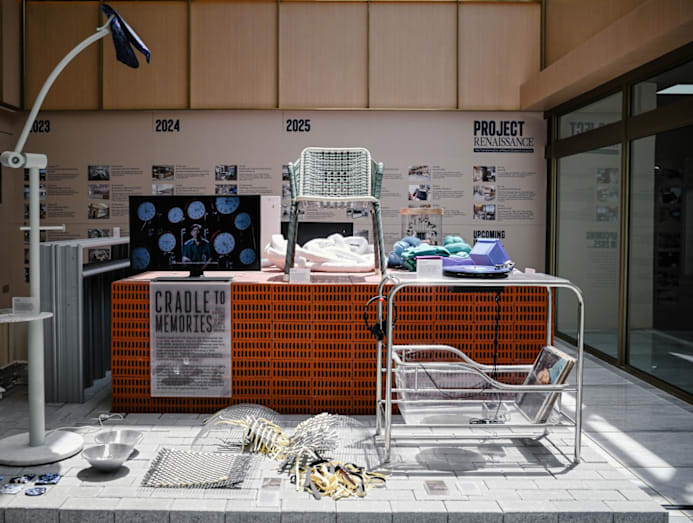
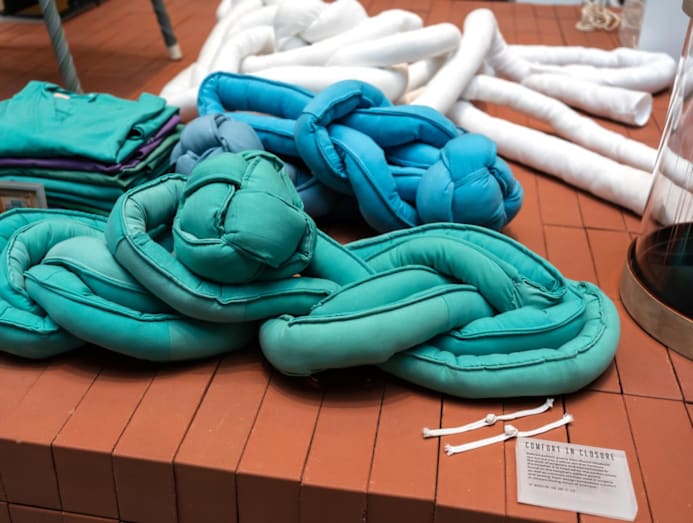
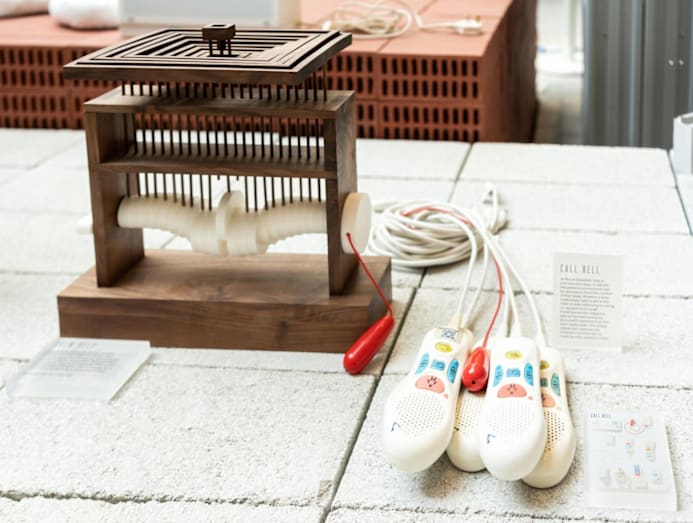
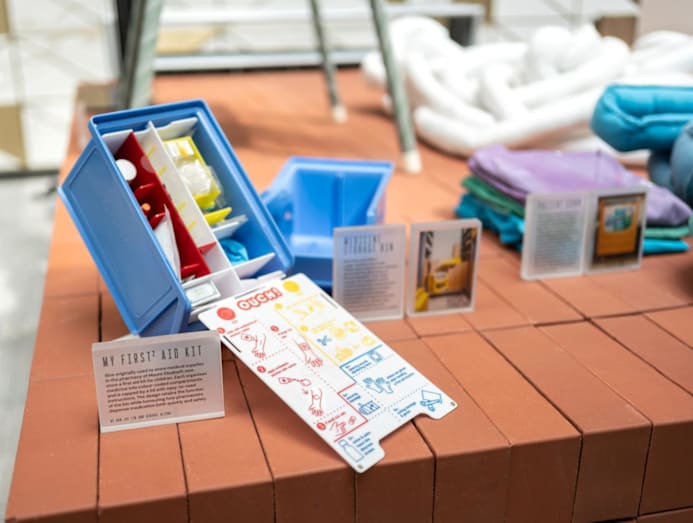
Industrial design students from the National University of Singapore were tasked to reimagine 10 objects – from baby cots to patient gowns – beyond a healthcare setting for an exhibition titled Cradle To Memories. The showcase is on display till Tuesday (Sep 30) at the hospital’s grand lobby as part of Singapore Design Week.
At present, there are no plans for commercial production, though it’s easy to envision these design objects in a home.
While significantly different from its original form, each “new” object was designed to retain its essence.
Siti’s passion for phlebotomy influenced two students to design a woven seat, conceived from a cold, clinical chair. The intricate weaving was meant to feel like a gentle “hug” for those who sit on the chair, symbolising the care that phlebotomists give behind the scenes.
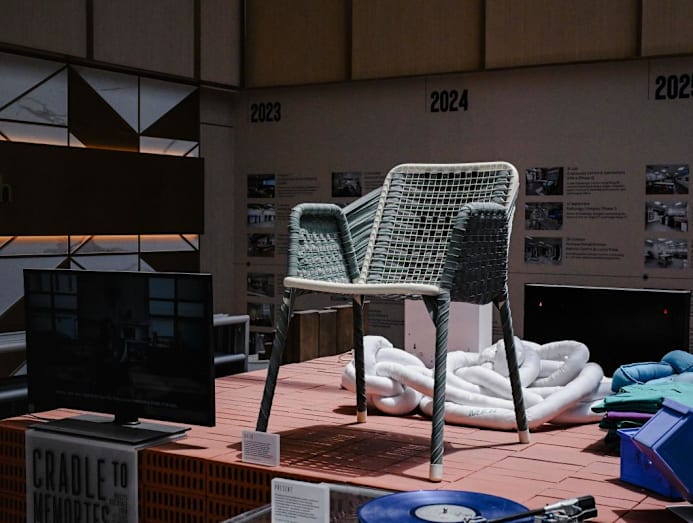
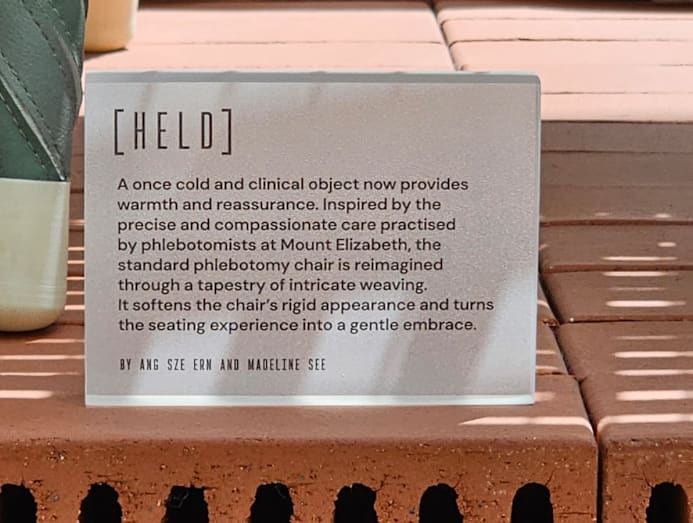
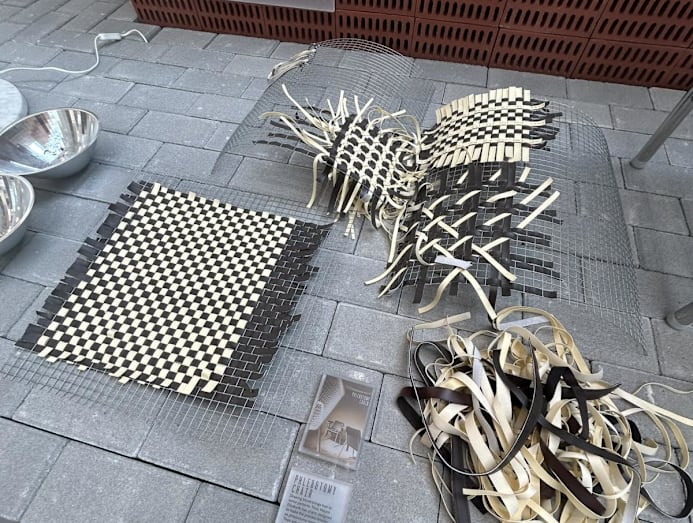
Some people may think blood can be drawn seated anywhere, but the chair is vital, she noted, hoping the exhibition would prompt more people to appreciate lesser known healthcare roles and place their trust in phlebotomists when they get their blood drawn.
“People always say the ‘Daylight Dracula’ is here. But don’t be afraid of the Draculas in the hospital because (we) are all very nice people,” she quipped.
While Siti has taken 30 minutes to find a vein – her longest time spent – she adheres to her general principle: Less pain, more gain.
She believes in holding new hires whom she trains to similarly stringent standards.
“I always tell them: If you hurt my patients, you hurt me. If you think that with one prick, you’ll fail (to prick the vein), don’t go for the second (prick). Make sure you (only do it) when you’re confident,” she said.
A decade on, her childhood dream of becoming a nurse to ease suffering still guides her every day, seeing the profession as a “noble job”.
“If I love my family and want them to have minimal pain,” she said, “I should treat every patient of mine the same.”
But one patient, in particular, stands out: An elderly man who was suffering from edema.
Two nurses and a doctor had tried – and failed – to prick the patient to draw blood. They needed a phlebotomist.
“It took me, I think, about 30 minutes to locate the vein. I analysed the method to be used and everything, so that’s where we got a successful prick,” recalled Siti.
“Before I left the room, the family members came to me and cried. They said thank you very much.”
Having been in their shoes with her mum, she understood what they were facing.
“From that day onwards, whenever the patient had a blood test,” she said, “I was the one who drew his blood.”
Cradle to Memories: Objects Rebirthed from 45 Years of Mount Elizabeth Hospital is on display at the hospital’s grand lobby till Sep 30, 2025. It will be moved to a permanent display spot in the hospital thereafter.
CNA Women is a section on CNA Lifestyle that seeks to inform, empower and inspire the modern woman. If you have women-related news, issues and ideas to share with us, email CNAWomen [at] mediacorp.com.sg (CNAWomen[at]mediacorp[dot]com[dot]sg).


